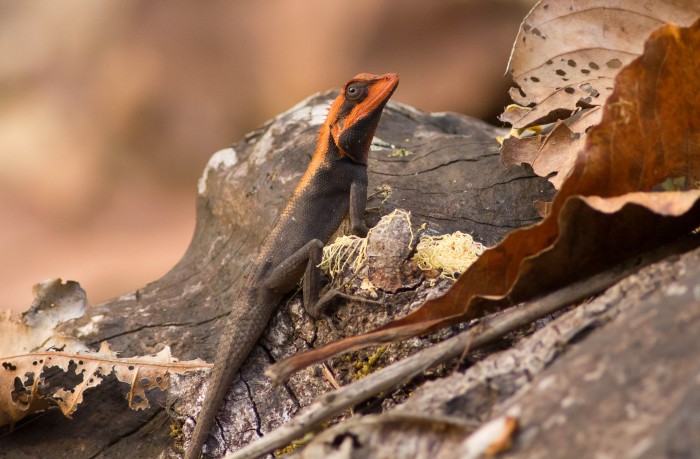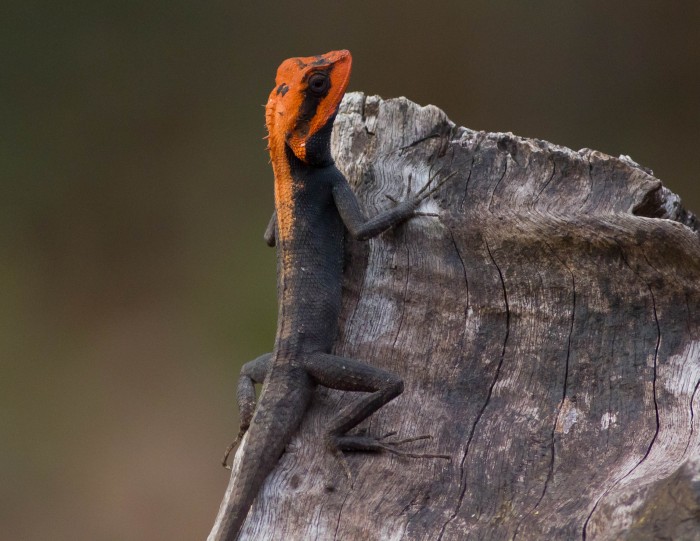for higher res images click on the pics themselves.
Nature is at times frustratingly unpredictable. Consider the situation I found myself in one early morning at Cotigao wildlife sanctuary in Goa. I was out birding and had my head tilted up into the trees as I searched for interesting birds to photograph.
Jungles can be silent places. Decibel levels are so low that bird calls will often give you a real start even though they may come from a considerable distance away. But today it wasn’t a bird call that gave me a start but a sudden rustle coming from some dry leaves very close to me. The volume of the rustle had me convinced that a large animal was moving beneath the leaves. I was wrong. The perpetrator was a small forest calotes. The jungle it seems had me fooled again!
Now comes the frustrating part. I only have my 400 mm prime lens with me! The Canon 400 mm is an excellent lens, that is if you want to shoot birds more than 3.5 meters away! For the Calotes I’d be much better off with my 100 mm macro lens which unfortunately, was lying at home 90 kilometers away!
Don’t get me wrong. The 400 mm would give my pictures a nice bookeh (soft blurred background). The only problem was that the light in the forest wasn’t that great. That would mean bumping up my ISO value to 800 to get a high enough shutter speed. Translated that’s more ‘noise’ than I can handle in my photograph.
So what do you do in a situation like this? You shoot anyways obviously! I’m glad I did. For the pictures turned out pretty decent in the end.
Besides the 400 mm has its own advantages. Since this is a relatively long tele lens I wouldn’t risk frightening the small agamid (which I almost certainly would had I been using the much shorter 100 mm instead).
Forest Calotes are normally brown and therefore often confused with young Common garden lizards (Calotes Vesicolor). The specimen in the photograph is a male decked up for the breeding season! The bright brick red color on its back is what helped me locate it quickly among the dry brown leaves.
Like most agamids this species is arboreal. The small lizard kept a wary eye on me as I kept changing my position to get photographs of it from different angles. Eventually it scooted up a tree and disappeared. And I resumed birding again!


